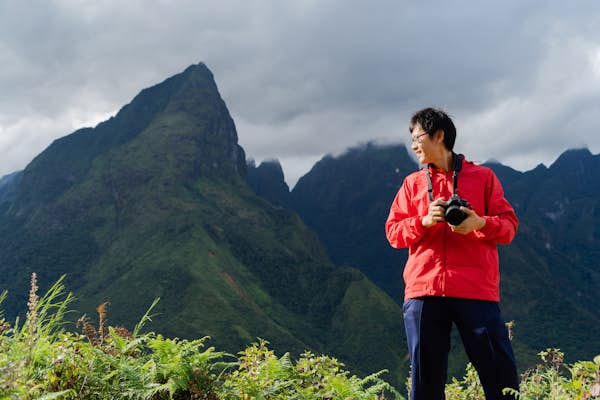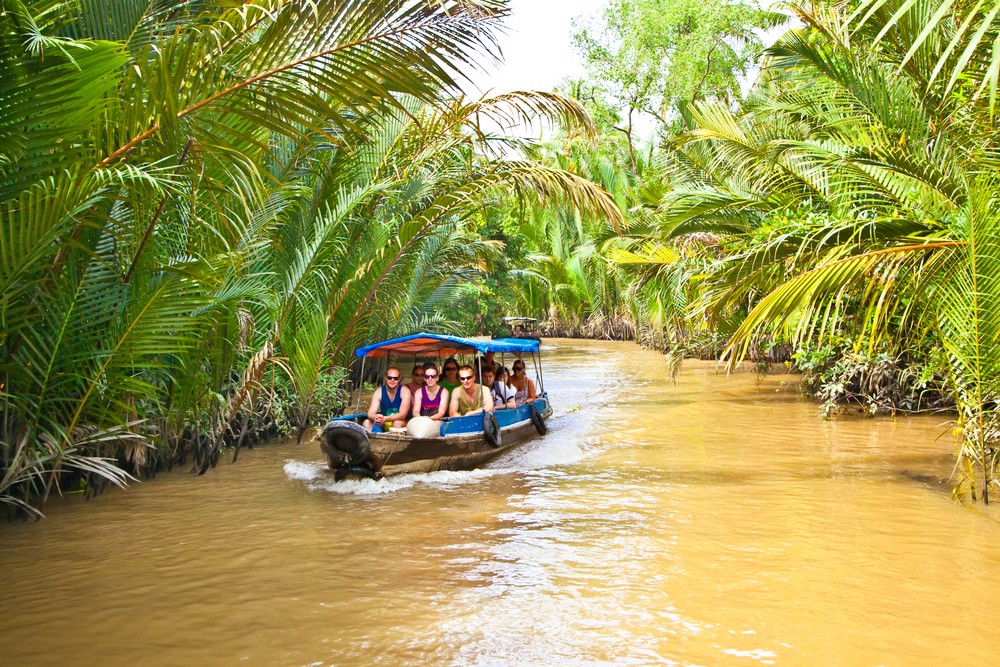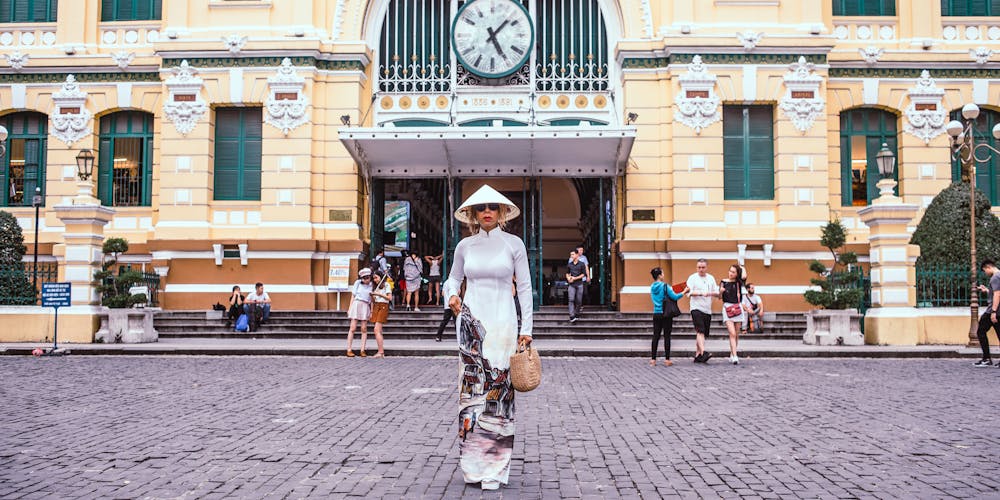Modern Vietnam is millions of miles from its war-torn past.
The jungle-covered hills that once shook with the sound of combat are now the serene setting for adventurous treks to remote villages, elevated viewpoints, waterfalls and the summit of Indochina’s highest mountain. With many local guides and trekking agencies available to help you get to the top of the trails, all you really need to do is pick a route and get started.
Many of Vietnam’s top treks are best done with local support. The tropical terrain can be challenging, the weather can be unpredictable, and you’ll need someone who speaks local languages to arrange meals and accommodation in hill tribe communities. Suppose you combine a hike with a homestay in a village, which e highly recommend. In that case, it’s possible to escape the crowds and find the hospitality and captivating culture that put Vietnam on the travel map.
With its stunning topography, the country’s mountainous north offers the best hiking opportunities, but there are routes throughout the country, from the Chinese border to the lowland jungles near Ho Chi Minh City. Here is our selection of the best hikes in Vietnam.
1. Cultural walks from Sapa
Easier hikes for beginners.
Distances vary, 1 or 2 days, easy
Hill tribe treks from Sapa are a vital part of the tourist experience in northern Vietnam, and trekking here is quite common these days. Still, rewarding experiences can still be had if you go with a guide who speaks the languages of local minority groups and can familiarize you with the various communities that French colonizers grouped together under the umbrella term Montagnards (mountain dwellers).
Don’t expect to stray too far off the beaten track: the most popular towns have paid entrance fees, souvenir shops and a fairly businesslike attitude towards tourism. Prefer hikes to Sin Chai, Cat Cat, Ban Ho and Y Linh Ho, which will get you away from the larger crowds. For a more authentic experience, hike for two days with an overnight stop at a local homestay, or save your hike for a more remote location like Bac Ha or Ba Be National Park.
2. Tribal walks around Bac Ha
Best hikes for tribal encounters.
7 to 10 km (4 to 6 miles), 1 to 3 days, easy to moderate
It’s a mystery how Bac Ha went unnoticed as a hiking base: the village remains a charming unspoiled center for hiking to the villages of 11 tribal groups, including the Flower Hmong, Dzao, Giay, Han, Xa Fang, Lachi, Nung. , Phula, Tay, Thai and Thulao. To get a real taste of local life, go with a local guide and spend the night in villages hidden in the emerald hills.
For an easy day hike, try the 8km (5 mile) hike through the Flower Hmong village of Thai Giang Pho to the Tay village of Na Lo, passing through some of the best rural scenery in northern Vietnam. For a great evening route, test your legs on the 10 km (6.2 mile) hike through rice paddies, cinnamon forests and misty hills to the Dzao villages of Nam Det and Nam Khanh.
Wherever you go, try to return to Bac Ha on the weekend: the Sunday market in Bac Ha and the Saturday market in nearby Can Cau attract tribal people from all over the region. There are also markets in the towns of Coc Ly, Lung Phin and Sin Cheng.
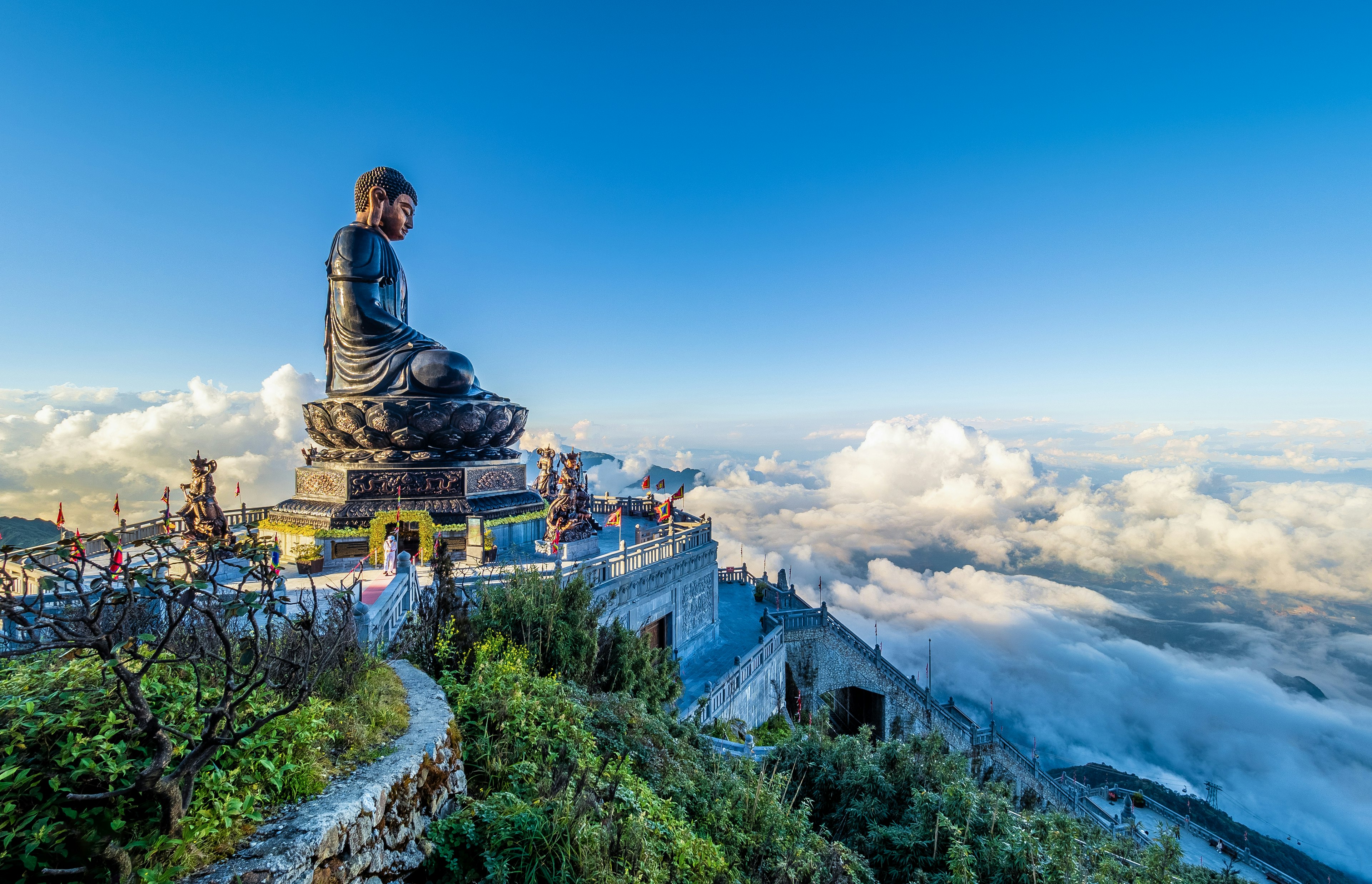
3. Fansipan
The best mountain hike
9 to 20 km (5.5 to 12.5 miles), 1 to 3 days, moderate to difficult
At 3,147 m (10,326 ft), Vietnam’s highest mountain presents a satisfying challenge, although the roads are rough and regular rain means the road can be slippery. As you climb the slopes of Fansipan, expect adrenaline-filled scrambles up steep slopes and jaw-dropping views of the Tonkinese Alps when the clouds clear.
The top of the mountain known as the “roof of Indochina” is most easily reached from the Tram Ton Pass on the northern side of the mountain, which is accessible by local bus from Sapa. There are also challenging alternative trails starting from the towns of Cat Cat and Sin Chai that require camping for one or two nights.
Guides are mandatory (and sensible in this rugged terrain), although some travelers hit the trails unaccompanied. Fit hikers can hike the Tram Ton trail in a day and return by cable car through the Muong Hoa Valley. Most people cover the climb in two or three days, camping in rustic sites along the way. With such beautiful scenery, why rush the trip?
4. Ba Be National Park
The best hikes to escape the crowds.
Distances vary, from 1 day, moderate.
The lush, green Ba Be National Park offers everything you could ask for in the Vietnamese highlands: limestone peaks emerging from misty valleys fringed by ribbon-shaped lakes, dense jungles hiding countless species of birds, mammals and butterflies. , and a dozen villages populated by Tay, Dzao and Hmong communities. Best of all, though, Ba Be has yet to be discovered by the masses, even if word is slowly spreading.
The hikes here are as they were in Sapa a generation ago, offering a deep immersion into mountain culture and a way of life that still moves with the rhythms of the seasons. As well as getting a taste of village life, you can visit spectacular waterfalls and winding cave systems, and spend the night in quiet homestays overlooking the lakes.
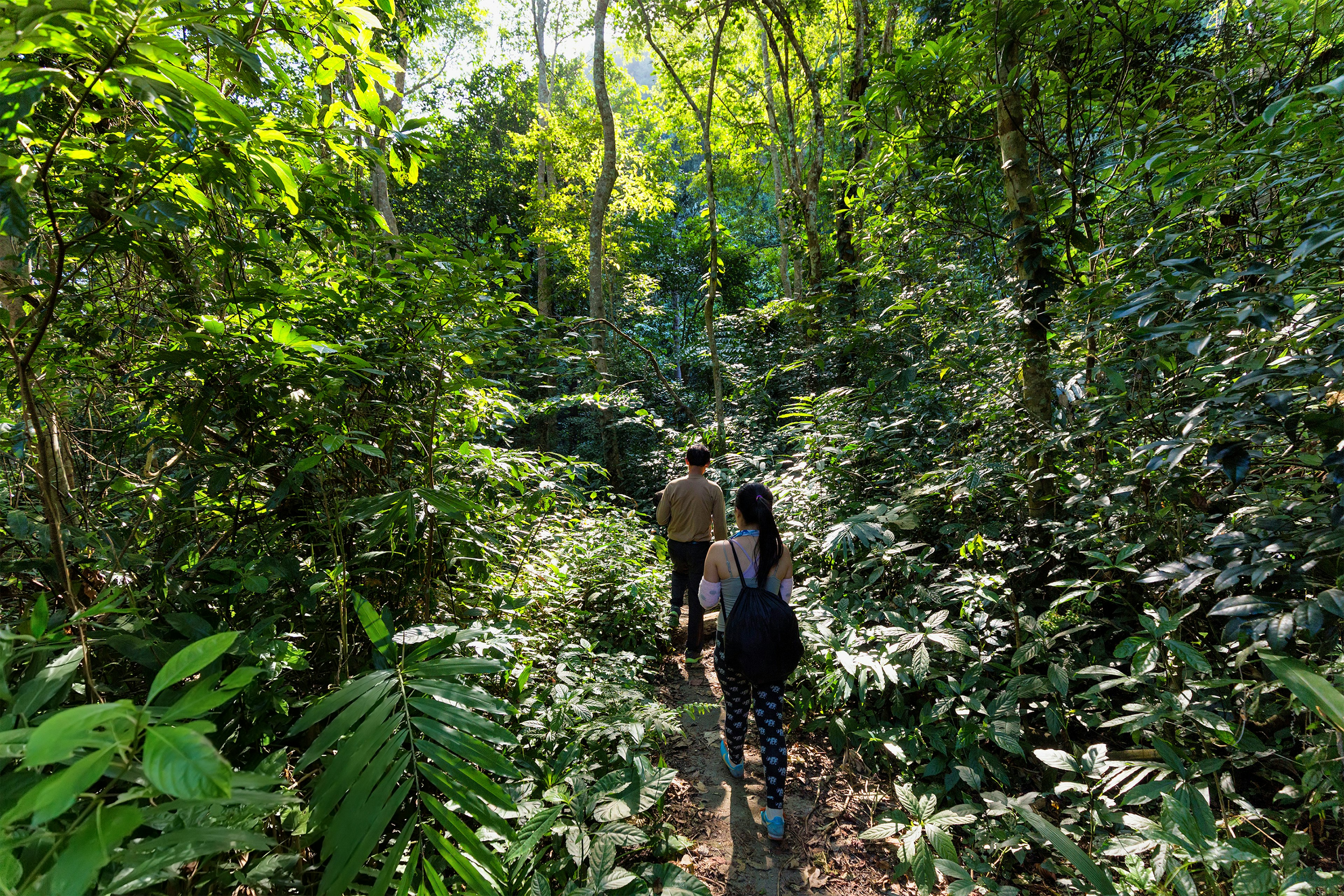
5. Cat Ba National Park
The best adventure hike on the island.
Distances vary, 1 to 2 days, moderate
The landscape in Cat Ba National Park in Halong Bay is almost impossibly green, with moss beds and forest glades showcasing a spectrum of emerald, lime, chartreuse and other hues. And this vivid landscape is best experienced on foot, starting from the park headquarters in Trung Trang. While guides are not required, they will help you get up close to the wildlife – be sure to keep an eye out for golden-headed langurs, the world’s most endangered primate.
The “easy” option here is the short, strenuous hike to the top of Ngu Lam Peak, a modest ridge that offers views of the surrounding jungle, although many opt for the more challenging 9 km (5.5 mi) hike through from the park to the fishing spot. Viet Hai village, where you can stay in a cozy homestay. The park is also a great place to climb, with several operators organizing trips to local karst outcrops with all equipment included.
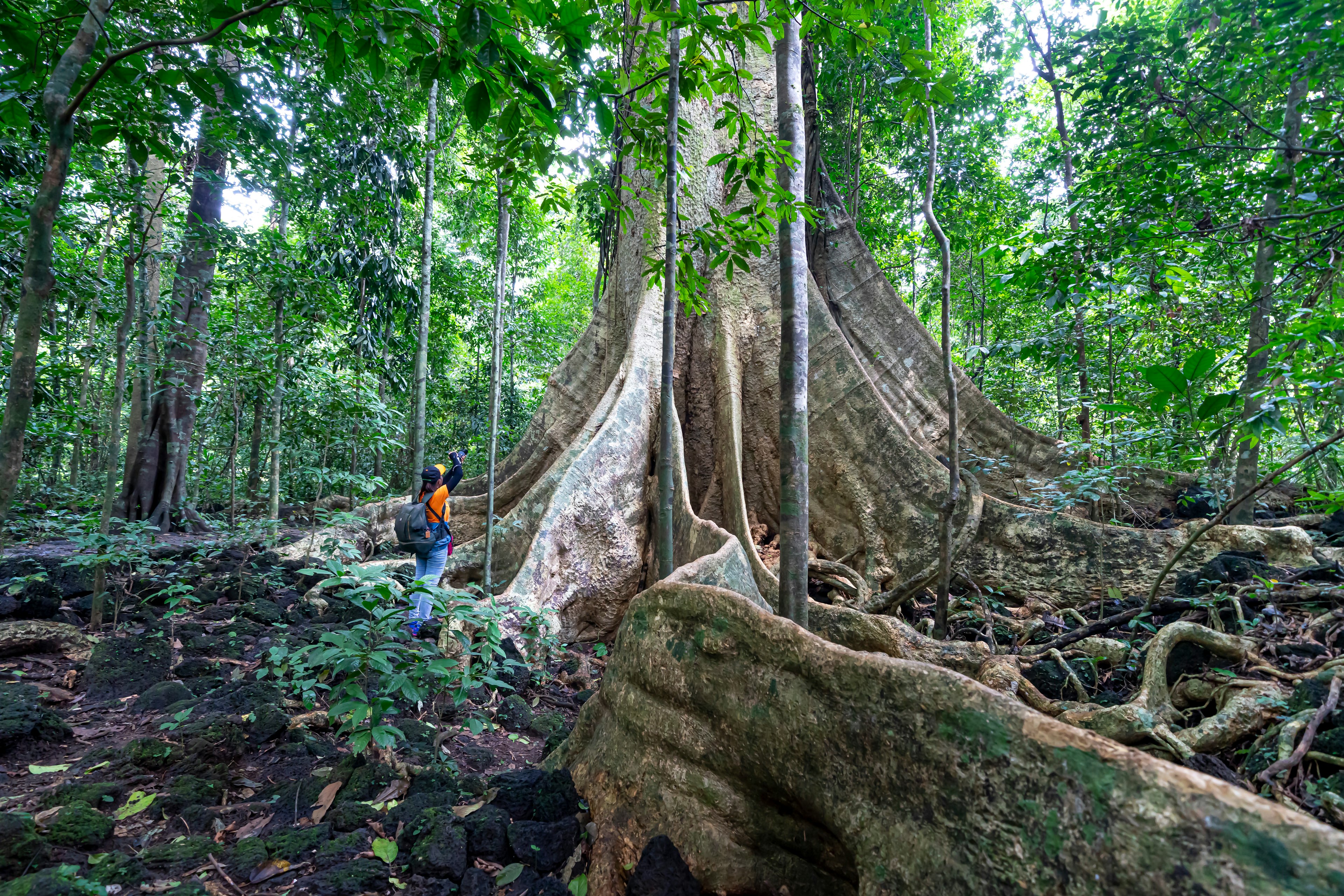
6. Cat Tien National Park
The best hike in southern Vietnam.
2 to 26 km (1.2 to 16 miles), 1 to 3 days, moderate to difficult
Southern Vietnam is often overlooked by hikers. Don’t make that mistake.
Cat Tien National Park covers 72,000 hectares (177,916 acres) of lowland rainforest brimming with biodiversity. While there are elephants and leopards hiding among the foliage, you’re more likely to see primates such as gibbons, pygmy lorises and langurs, along with reptiles, amphibians and a wide variety of bird species.
Guides can be hired through local lodges. The most popular trip is the half-day hike from national park headquarters in search of golden-cheeked gibbons, although this involves an early start to hear the primates’ dawn chorus. Most hikers visit the Dao Tien Endangered Primate Species Center for more ape encounters; Trip fees help fund the park’s conservation activities.
7. Mai Chau Villages
Best Easy Hikes Near Hanoi
5 to 18 km (3 to 11 miles), 1 to 2 days, easy
You don’t have to go far from Hanoi to find good hiking terrain. Mai Chau township floats on a green carpet of rice fields, about 135 kilometers (84 miles) southwest of the capital. This is beautiful, rather than challenging, terrain with the most popular walking destinations, villages inhabited by white Thais. These people are known for their colorful textiles, which you can buy without too much haggling.
To see what the area has to offer, try the 18 km (11 mile) hike from Ban Lac village to Xa Linh village. A local guide will help you navigate the slippery trail and you will need to arrange a vehicle to meet you at the end of the trail for the return trip to Mai Chau. Longer walks can be arranged through local homestays and lodges, although we recommend coming during the week to avoid the weekend crowds.
8. Cao Bang
The best hikes off the beaten path
Distances and durations vary, from moderate to difficult.
Tucked away near the Chinese border in the far northeast of Vietnam, Cao Bang is the place to discover rural communities that have until now escaped the influence of mass tourism. This comes with a degree of responsibility, so be sure to walk with a guide and stay at homestays in the village to ensure that tourist money reaches the local economy. The main destinations for hikers are the hillside villages of the Tay, Nung, Hmong, Dzao and Lolo peoples, with markets that change from village to village on different days of the lunar month.
It’s easy to take walks to Ban Gioc Waterfall and Nguom Ngao Cave, both accessible by local buses from Cao Bang, but accessing outlying towns will require local support. Most hikes are multi-day and your guide will need to make arrangements for an overnight stay. It may be easier to organize a hike through a reputable agency in Hanoi.
